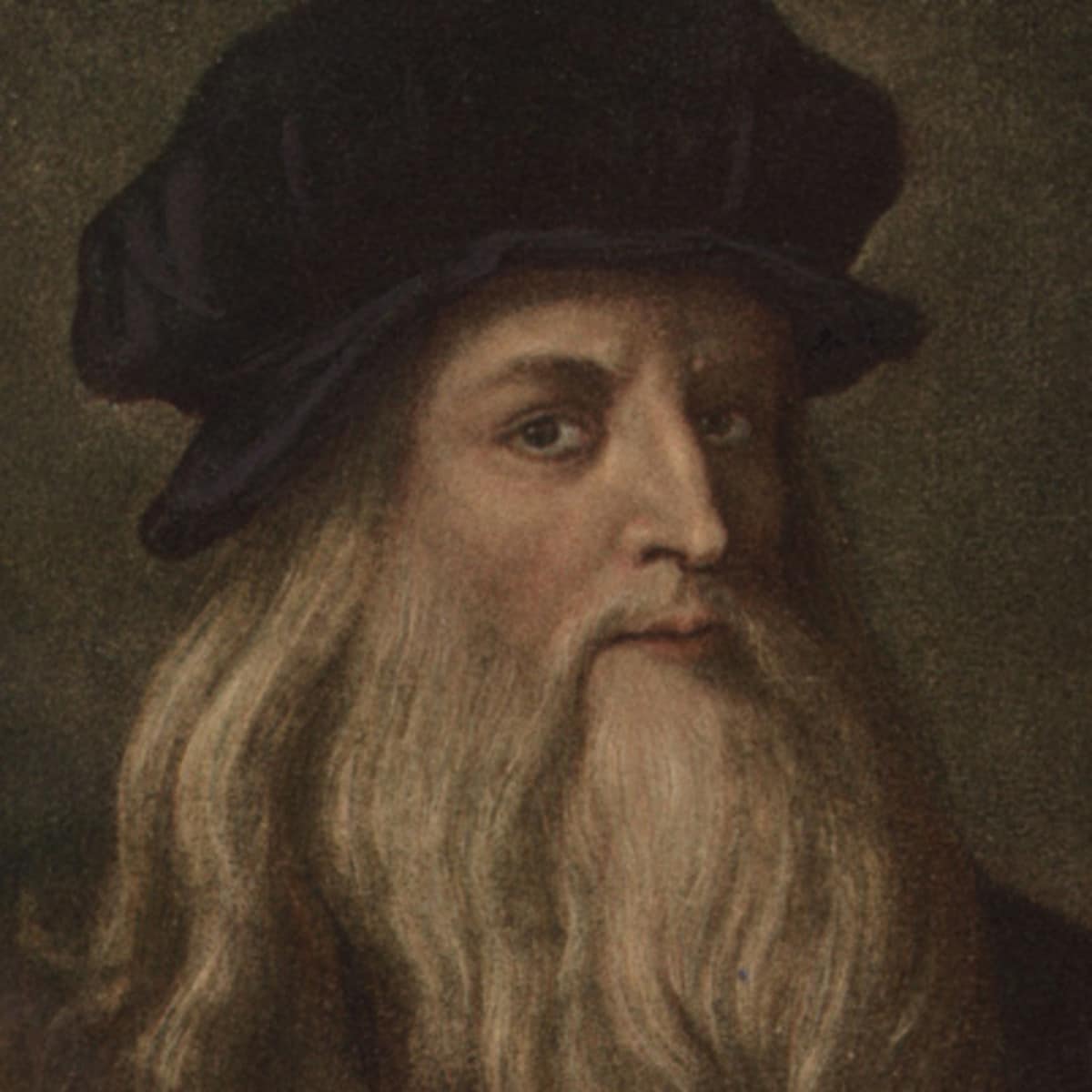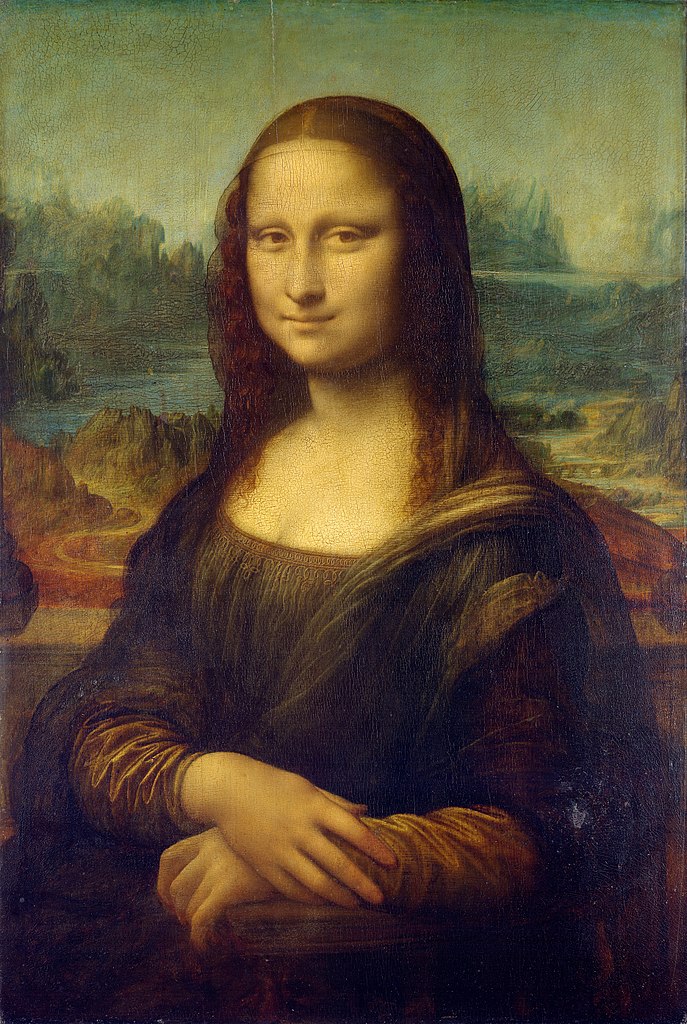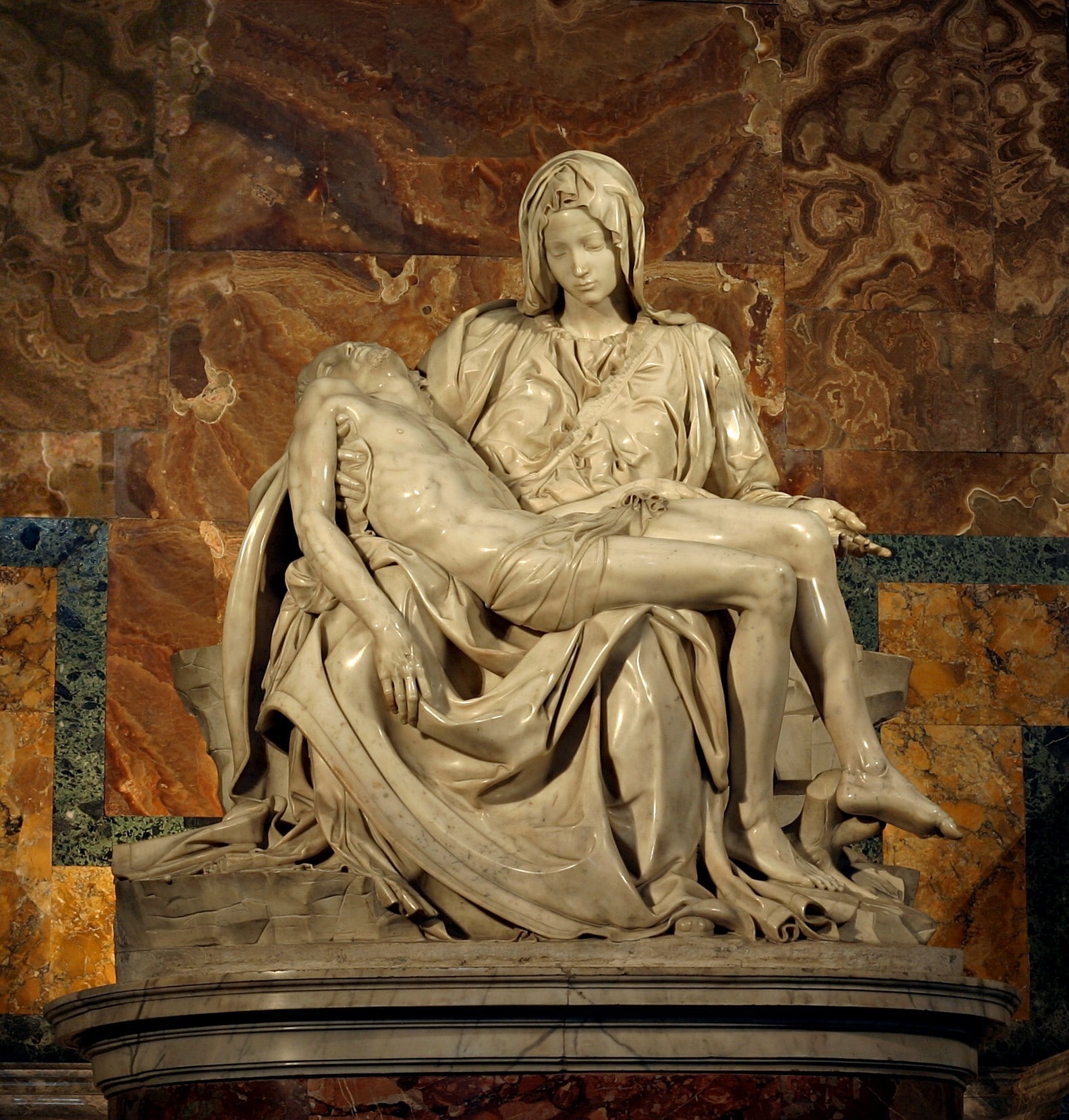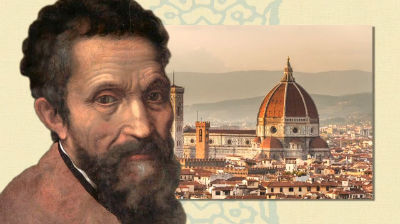Great Renaissance Artists
Leonardo da Vinci

More commonly Leonardo da Vinci or simply Leonardo, was an Italian polymath of the Renaissance. Whose areas of interest included invention, painting, sculpting, architecture, science. As well as music, mathematics, engineering, literature, anatomy, and much more. Sometimes credited with the inventions of the parachute, helicopter and tank, he epitomised the Renaissance humanist ideal.
He spent his first five years in the of in the home of his mother, and from 1457 lived in the household of his father. Grandparents and uncle in the small town of Vinci. His father had married a sixteen-year-old girl named Albiera Amadori, who loved Leonardo but died young in 1465 without children. When Leonardo was sixteen (1468), his father married again to twenty-year-old Francesca Lanfredini, who also died without children. Piero’s legitimate heirs were born from his third wife Margherita di Guglielmo (who gave birth to six children Antonio, Giulian, Maddalena, Lorenzo, Violante and Domenico) and his fourth and final wife, Lucrezia Cortigiani (who bore him another six children: Margherita, Benedetto, Pandolfo, Guglielmo, Bartolomeo and Giovanni).
Background
In all, Leonardo had twelve half-siblings, who were much younger than he was (the last was born when Leonardo was forty years old) and with whom he had very few contacts, but they caused him difficulty after his father’s death in the dispute over the inheritance. Leonardo received an informal education in Latin, geometry and mathematics. In later life, Leonardo recorded only two childhood incidents. One, which he regarded as an omen, was when a kite dropped from the sky and hovered over his cradle, its tail feathers brushing his face.

Among the works created by Leonardo in the 16th century is the small portrait known as the Mona Lisa or “la Gioconda”, the laughing one. In the present era, it is arguably the most famous painting in the world.
Michelangelo

Michelangelo di Lodovico Buonarroti Simoni or more commonly known by his first name Michelangelo. was an Italian sculptor, painter, architect and poet of the High Renaissance born in the Republic of Florence. who exerted an unparalleled influence on the development of Western art. Despite making few forays beyond the arts, his artistic versatility was of such a high order that he is often considered a contender for the title of the archetypal Renaissance man, along with his rival, the fellow Florentine and client of the Medici, Leonardo da Vinci.
Michelangelo’s works
A number of Michelangelo’s works of painting, sculpture and architecture rank among the most famous in existence. His output in these fields was prodigious; given the sheer volume of surviving correspondence, sketches and reminiscences, he is the best-documented artist of the 16th century. He sculpted two of his best-known works, the Pietà and David, before the age of thirty. Despite holding a low opinion of painting. he also created two of the most influential frescoes in the history of Western art. the scenes from Genesis on the ceiling of the Sistine Chapel in Rome, and The Last Judgment on its altar wall. His design of the Laurentian Library pioneered Mannerist architecture. At the age of 74, he succeeded Antonio da Sangallo the Younger as the architect of St. Peter’s Basilica.
One of them, by Giorgio Vasari, proposed that Michelangelo’s work transcended that of any artist living or dead. Was “supreme in not one art alone but in all three”.
His contemporaries often admired his terribilità—his ability to instil a sense of awe. Attempts by subsequent artists to imitate Michelangelo’s impassioned. highly personal style resulted in Mannerism. the next major movement in Western art after the High Renaissance.
Michelangelo’s Pietà, St Peter’s Basilica

In November 1497, the French ambassador to the Holy See, Cardinal Jean de Bilhères-Lagraulas. Commissioned him to carve a Pietà, a sculpture showing the Virgin Mary grieving over the body of Jesus. The subject, which is not part of the Biblical narrative of the Crucifixion. Was common in religious sculpture of Medieval Northern Europe and would have been very familiar to the Cardinal. In addition, The contract was agreed upon in August of the following year.
Furthermore, Michelangelo was 24 at the time of its completion. It was soon to be regarded as one of the world’s great masterpieces of sculpture, “a revelation of all the potentialities and force of the art of sculpture”. Contemporary opinion was summarised by Vasari: “It is certainly a miracle that a formless block of stone could ever have been reduced to a perfection that nature is scarcely able to create in the flesh.” It is now located in St Peter’s Basilica.

